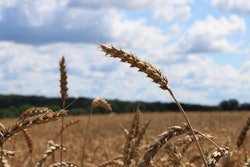
It is no secret anymore: This year’s wheat crop is going to be less than ideal. Many producers are asking whether it is possible to switch entirely to barley. The quick answer is yes. But — there is always a “but” somewhere — we must qualify this affirmative position before anyone who has not experienced all-barley diets before attempts the sudden switch.
First of all, barley contains more fiber than wheat, and this is both a positive and a negative depending on the species and production stage of each animal. Next, barley contains (often) more protein than most (soft) wheat varieties, which implies the amino acid profile needs to be adjusted. It merits mentioning that barley is poor in the amino acid histidine, and in very low protein diets this can become problematic. Of course, barley contains less energy than wheat, and we need to either adjust oil/fat additions or the energy-to-protein (amino acids) ratio. Finally, the fiber profile of fiber is rather distinct, and if a xylanase enzyme was employed in wheat-heavy diets, a different enzyme (cocktail) is required for barley-rich diets.
Finally, we must ensure that barley is free of mycotoxins — or we achieved nothing by switching to barley. Ergot is one such toxin that is often undetected in barley. If piglets' ear tips turn black (necrosis), this is ergot toxicosis. Barley may be affected by the same types of mycotoxins like wheat, but their present profile might be different, so a different mycotoxin agent might be warranted.
In brief, all-barley diets are possible — and they are quite often used in countries where the temperatures are usually rather low — but it takes some learning to fine-tune the smaller details of this cereal.

















